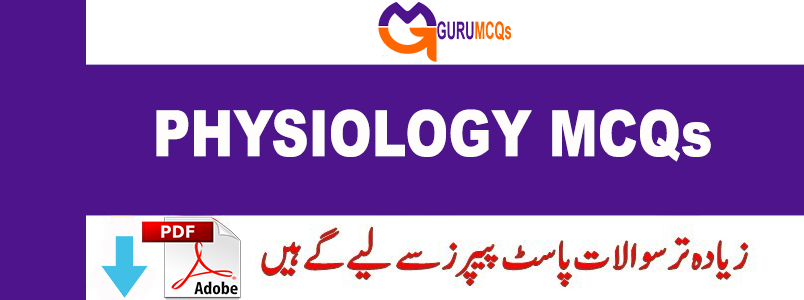
Our collection of physiology MCQs is meticulously designed to reinforce the conceptual understanding of various topics in biology. Covering a broad spectrum, our Human Physiology MCQs with answers delve into multiple concepts, including human digestion, the nervous system, human reproduction, body fluids and circulation, breathing and gas exchange, the renal system, respiratory system, GIT and liver, endocrinology, locomotion and movement in human sense organs, reflex actions, spinal nerves, physiology of urine formation, insulin physiology, and more. These carefully selected topics are sourced from reputable and authoritative physiology reference books. Our physiology MCQs with answers serve as invaluable resources for individuals preparing for interviews, entrance exams, competitive assessments, and certifications, catering to experienced professionals, newcomers, and students alike. Additionally, explore our MCQs on Pharmacology for further study.
101. In a DNA molecule adenine always forms a linkage with______________?
A. Guanine
B. Cytosine
C. Thymine
D. Uracil
102. The oral and pharyngeal phases of swallowing take place very rapidly and last about______________?
A. 3.5 seconds
B. 1-1.5 seconds
C. 6.0 seconds
D. 9.5 seconds
103. The major functional difference between DNA and RNA is_____________?
A. RNA contains ribose
B. DNA carries the information in all organizations
C. DNA is localized in nucleus
D. RNA does not contain thymine
104. Most important function of albumin in body is_______________?
A. Oncotic pressure
B. Drug transport
C. Toxic transport
D. Coagulation
105. In peripheral tissues which of the following contains substance P______________?
A. Plasma cell
B. Mast cell
C. Nerve terminal
D. Vascular endothelium
106. Which of the following events DO NOT occur in rods in response to light_______________?
A. Structural changes in rhodopsin
B. Activation of transducin
C. Decreased intracellular cGMP
D. Opening of Na+ channels
107. Gut associated lymphoid tissue ( GALT) is primarily located in______________?
A. Lamina propria
B. Submucosa
C. Muscularis
D. Serosa
108. To check objective pain response, which is best used method_______________?
A. Facial pain scale
B. Knee jerk reflex
C. H- Reflex
D. R III Reflex
109. T- lymphocytes play a primary role in_________________?
A. Production of Antibodies
B. production of lymphokines and delayed hypersensitivity
C. Activation of complement system
D. Immediate Hypersensitivity
110. Which among the following is also called” peak less” insulin analog ?
A. Insulin lispro
B. Insulin glargine
C. Insulin aspart
D. Lente insulin
